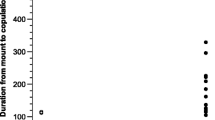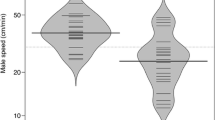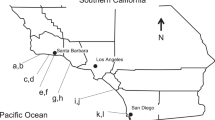Summary
The number of a common parasite (Cuclotogaster sp.) on male satin bowerbirds was related to male mating success in a test of Hamilton and Zuk's (1982) bright male hypothesis. The data do not show the expected inverse correlation between female mating preferences and the level of parasitic infection of males predicted by that model. Nearly all matings are accomplished by bower-holding males (Borgia 1985a), but the vast majority of these males were uninfected. There were large differences in mating success among the uninfected bower holders, but this could not be explained by between male differences in the level of parasitic infection. From this I conclude that levels of parasitic infection are not now an important direct cause of intermale variation in mating success. The results are, however, consistent with a hypothesis that a low level of infection is indicative of the overall healthy condition of a male. If this is true, it supports the hypothesis that the ability to hold a bower may be an indicator of male condition to females.
Similar content being viewed by others
References
Andersson M (1982) Female choice selects for extreme tail length in a widowbird. Nature 299:818–820
Ash JS (1960) A study the Mallophaga of birds with particular reference to their ecology. Ibis 102:93–110
Bennet GF (1961) On three species of Hippoboscidae (Diptera) on birds in Ontario. Can J Zool 39:379–406
Borgia G (1979) Sexual selection and the evolution of mating systems. In: MA Blum (ed) Sexual selection and reproductive competition. Academic Press, New York pp 19–80
Borgia G (1985a) Bower quality, number of decorations, and mating success of male satin bowerbirds (Ptilonorhynchus violaceus): an experimental analysis. Anim Behav 33:266–271
Borgia G (1985b) Bower destruction and sexual competition in the satin bowerbird (Ptilonorhynchus violaceus). Behav Ecol Sociobiol 18:91–100
Borgia G, Gore M (1986) Feather stealing in the satin bowerbird (Ptilonorhynchus violaceus): male competition and the quality of display. Anim Behav 34:727–738
Borgia G, Pruett-Jones S, Pruett-Jones M (1985) The evolution of bowers as markers of male quality. Z Tierpsychol 67:225–236
Brown NS (1972) The effect of host beak condition on the size of Menacanthus stramineus populations of domestic chickens. Poult Sci 31:162–164
Corbet GB (1956) The phoresy of Mallophaga on a population of Ornithomyia fringillina Curtis (Dipt., Hippoboscidae). Entomol Mon Mag 92:207–211
Darwin C (1871) The descent of man and selection in relation to sex. John Murray, London
DeVaney JA (1976) Effects of the chicken body louse, Menacanthus stramineus, on caged layers. Poultry Sci 55:430–435
Fisher RA (1930) The Genetical Theory of Natural Selection. Clarendon Press, Oxford
Hamilton WD, Zuk M (1982) Heritable true fitness and bright birds: a role for parasites? Science 218:384–387
Keirans JE (1975a) A review of the phoretic relationship between Mallophaga (Phthiraptera: Insecta) and Hippoboscidae. J Med Entomol 12:71–76
Keirans JE (1975b) Records of phoretic attachment of Mallophaga (Insecta: Phthiraptera) on insects other than Hippoboscidae. J Med Entomol 12:476
Marshall AG (1981) The ecology of ectoparasitic insects. Academic Press, New York
Matthysse JG (1944) Biology of the cattle biting louse and notes on cattle sucking lice. J Econ Entomol 37:436–442
Nelson BC, Murray MD (1971) The distribution of Mallophaga on the domestic pigeon (Columba livia). Int J Parasit 1:21–29
Nelson WA (1962) Development in sheep of resistance to the ked Melophagus ovinus (L.) II. Effects of adrenocorticotrophic hormone and cortisone. Expl Parasit 12:41–44, 45–51
Overal WL, Wingate LR (1976) The biology of the batbug Stricticimex antennatus (Hemiptera: Cimicidae) in South Africa. Ann Natal Mus 22:821–828
Taylor G, Williams G (1982) The lek paradox not resolved. Theor Popul Biol 22:392–404
Van Valen L (1973) A new evolutionary law. Evol Theor 1:1–18
Vellenga R (1981) Moults of the satin bowerbird Ptilonorhynchus violaceus. Emu 80:49–54
Zahavi A (1975) Mate selection — a selection for a handicap. J Theor Biol 53:205–214
Author information
Authors and Affiliations
Rights and permissions
About this article
Cite this article
Borgia, G. Satin bowerbird parasites: a test of the bright male hypothesis. Behav Ecol Sociobiol 19, 355–358 (1986). https://doi.org/10.1007/BF00295708
Received:
Accepted:
Issue Date:
DOI: https://doi.org/10.1007/BF00295708




